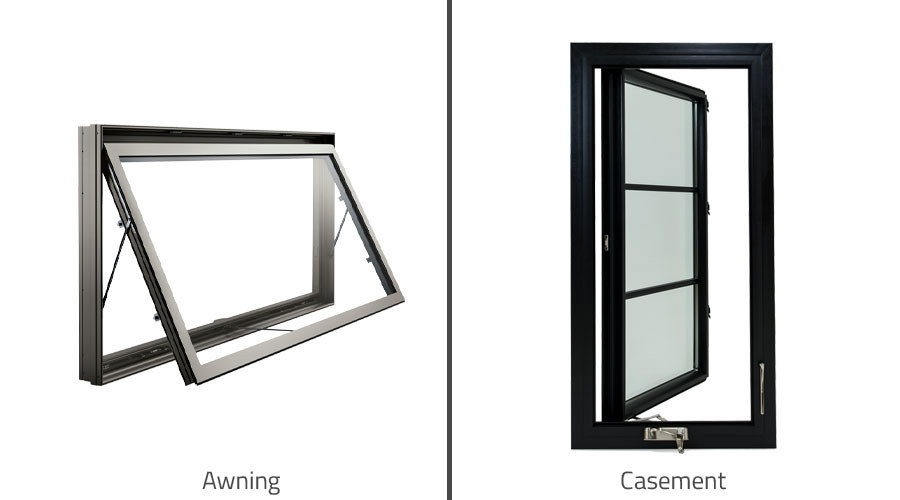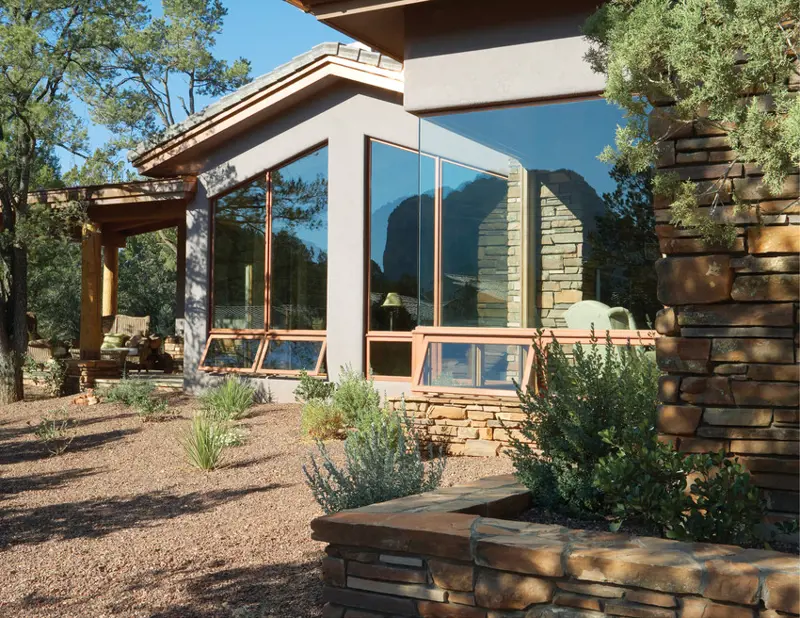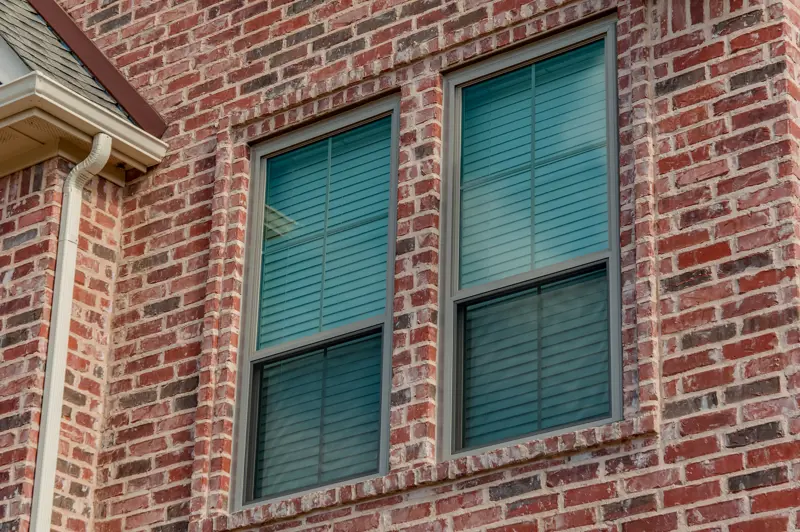
Are Awning Windows More Efficient Than Casement Windows?
Replacing or updating an appliance in your home is always a great time to try something new or different, that excitement and curiosity also applies to replacement windows. Updating or replacing your windows allows you to change the look, efficiency, and function of windows in your home. Most homeowners only replace the windows in a home once making it even more important to evaluate your options before you buy. Two common window styles that we’ll compare in this post are the awning and casement styles. We’ll also answer that important question, “Are awning windows more efficient than casement windows?”
Use the links below to skip ahead in this post:
- Awning Windows vs. Casement Windows
- Are awning windows more efficient than casement windows?
- Should I get awning or casement windows for my home?
- Pros and cons of awning windows
- Pros and cons of casement windows
Awning Windows vs. Casement Windows

Awning windows are horizontally oriented. The wide window is hinged at the top of the sash and pushes out at the bottom. This window like its casement counterpart are typically operated by a crank. You’ll commonly find this style of window in kitchens, laundry rooms, paired as transom windows above doors, and paired above or below picture windows.
Casement windows are vertically oriented and hinged along the side, the vertical edge of the sash. The windows push open on the side opposite the hinge and like the awning window is operated by a crank.
Are Awning Windows More Energy Efficient Than Casement Windows?
Awning and casement windows are among the most energy efficient window styles available after picture windows. Picture windows are fixed windows, meaning they’re always closed and have no way to open, casement and awning windows on the other hand are operable windows which means there are moving parts to the window and more opportunities for air to pass through. Compared to other operable styles casement and awning windows offer more efficiency because they have just one sash and it includes a seal around the perimeter of the sash. When the windows are closed the sash seals tightly against the frame of the window.
So, are awning windows more efficient than casement windows? No, not necessarily. Both styles are built for max efficiency. The differences in efficiency are ultimately determined by the materials and glass options used in the rest of the window unit.
Should I Get Awning or Casement Windows for My Home?
The choice between awning and casement windows depends on style more than energy-efficiency. Consider the pros and cons in the lists below before making your choice.
Pros and Cons of Awning Windows
Awning windows are the most convenient in an area where the space is wider than it is tall. However, there are other things to consider as well.
- Provide increased ventilation since they can be open during rain due to their slanting angle.
- Single seal along the outside of the window means better insulation and high energy-efficiency.
- View is unobstructed since there isn't anything running through center vision.
- Outward opening design means they can protrude into high traffic areas.
- Cranking mechanism can wear out quickly increasing the maintenance.
- Debris can land on the window since it is more of a horizontal plane when opened.
- May not be ideal for egress because it doesn’t open as wide as other styles.
Pros and Cons of Casement Windows
Casement windows share many of the same pros and cons with awning windows. One significant difference is their vertical design. This makes it easier to replace a standard single- or double-hung window.
- The angle of the window often functions as a chute funneling more air directly into the home, perfect for extra ventilation.
- The vertical orientation of casement windows makes them easy to fit into existing designs.
- Casement windows are bigger than awning windows and the lack of center bars (like in hung windows) create unobstructed views.
- Since they hinge outward, the windows can obstruct areas of high traffic.
- High winds present a greater risk for catching and breaking off casement windows.
Energy-efficiency is one of many valuable features in a window. Fortunately, both casement and awning windows are designed to provide weathertight seals. The differences in design and operation will make it easier to choose one for your home. Do vertically or horizontally oriented windows make more sense in your design?
Oops!
We don't currently serve your area but do want to help you plan your project. Try our Build & Price tool to get an idea of window & door costs within DFW. Your area may be higher or lower but at least you'll have some idea of the price.
Thanks for stopping by.







